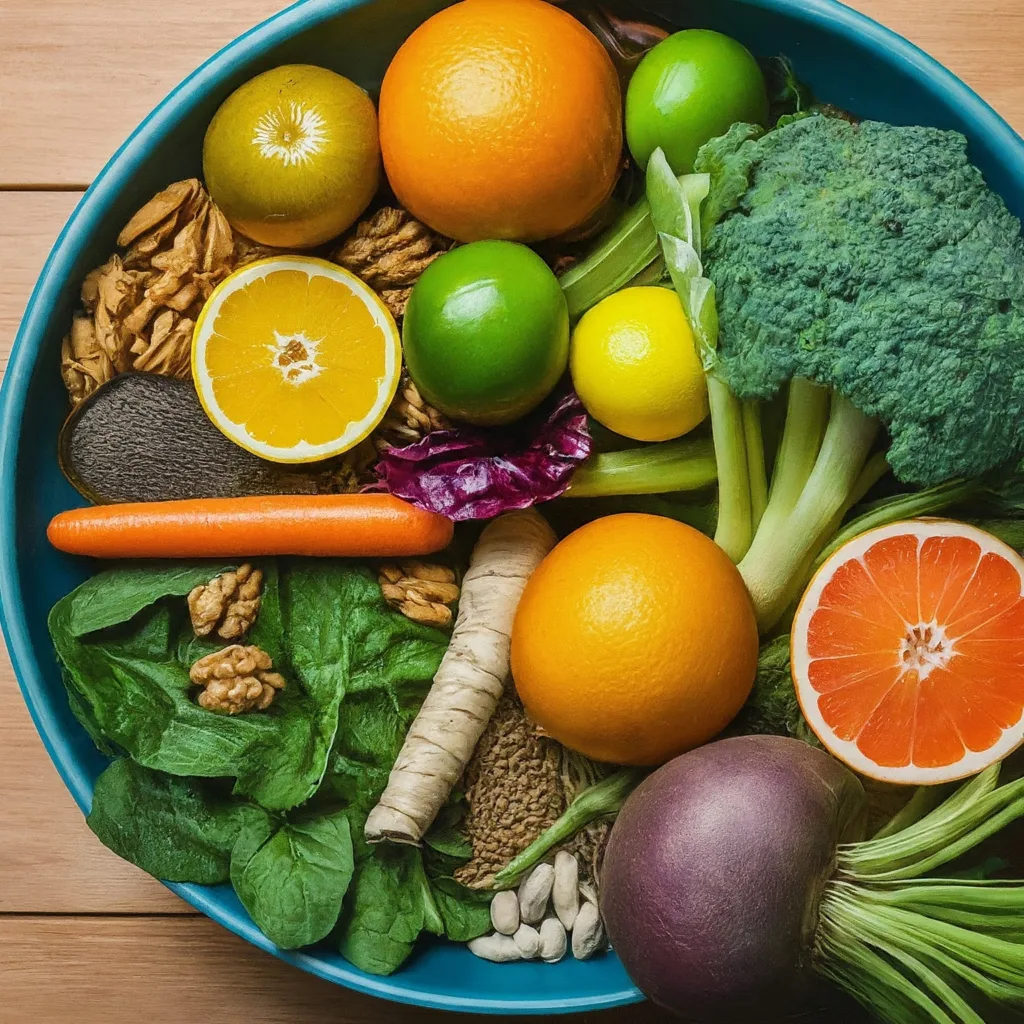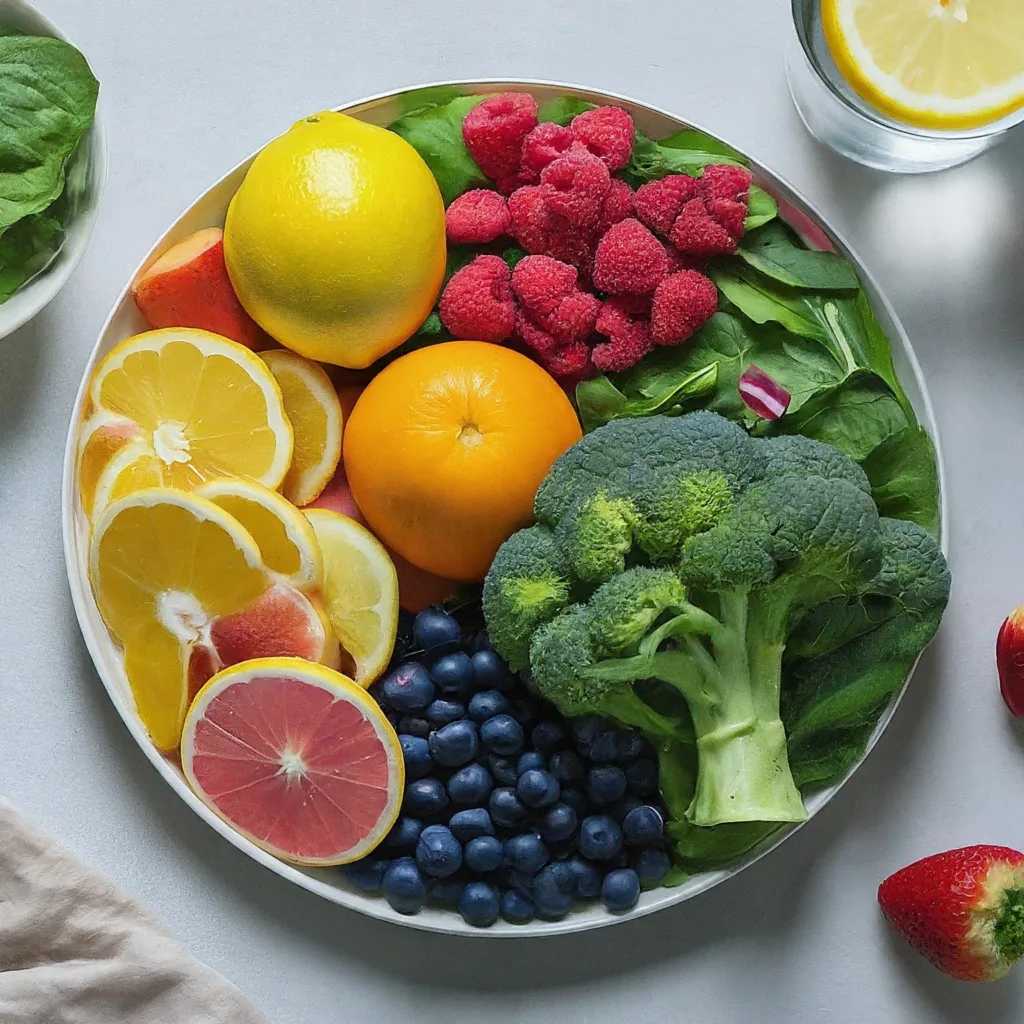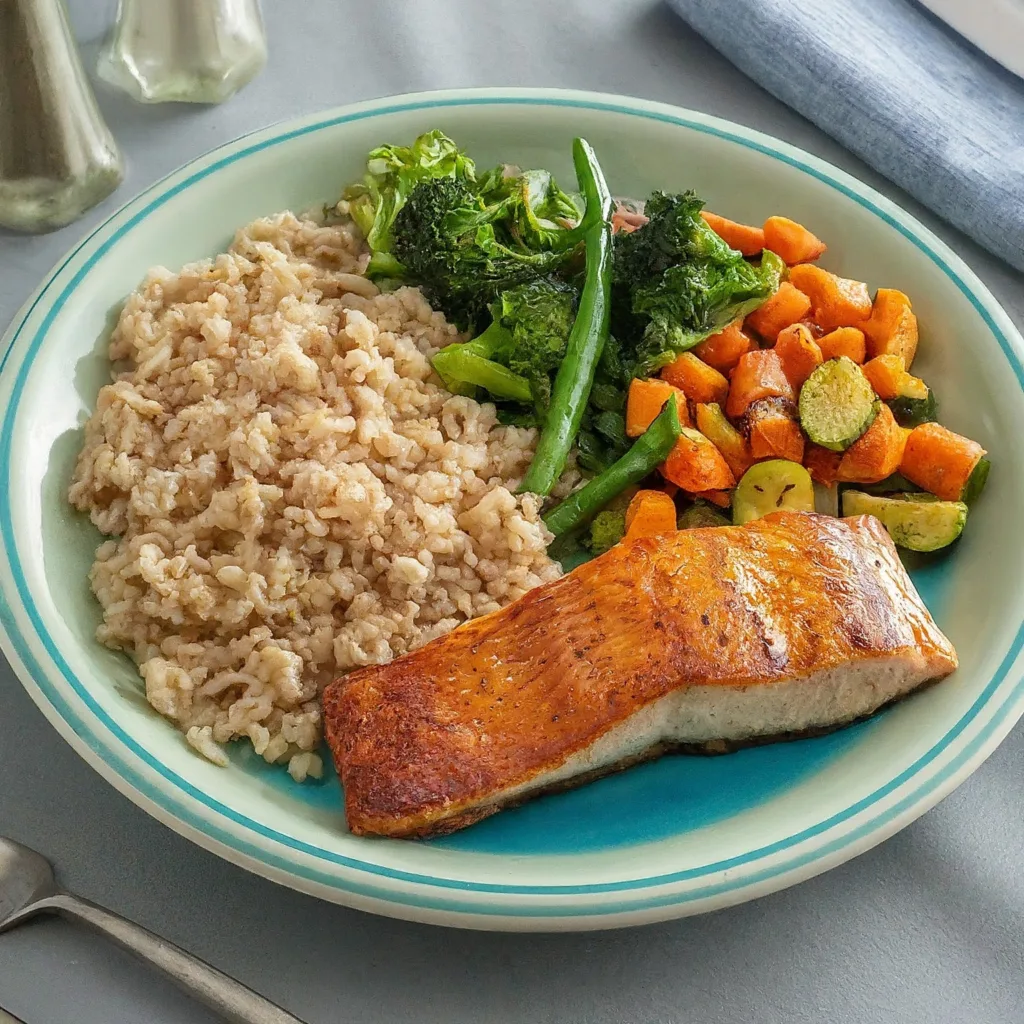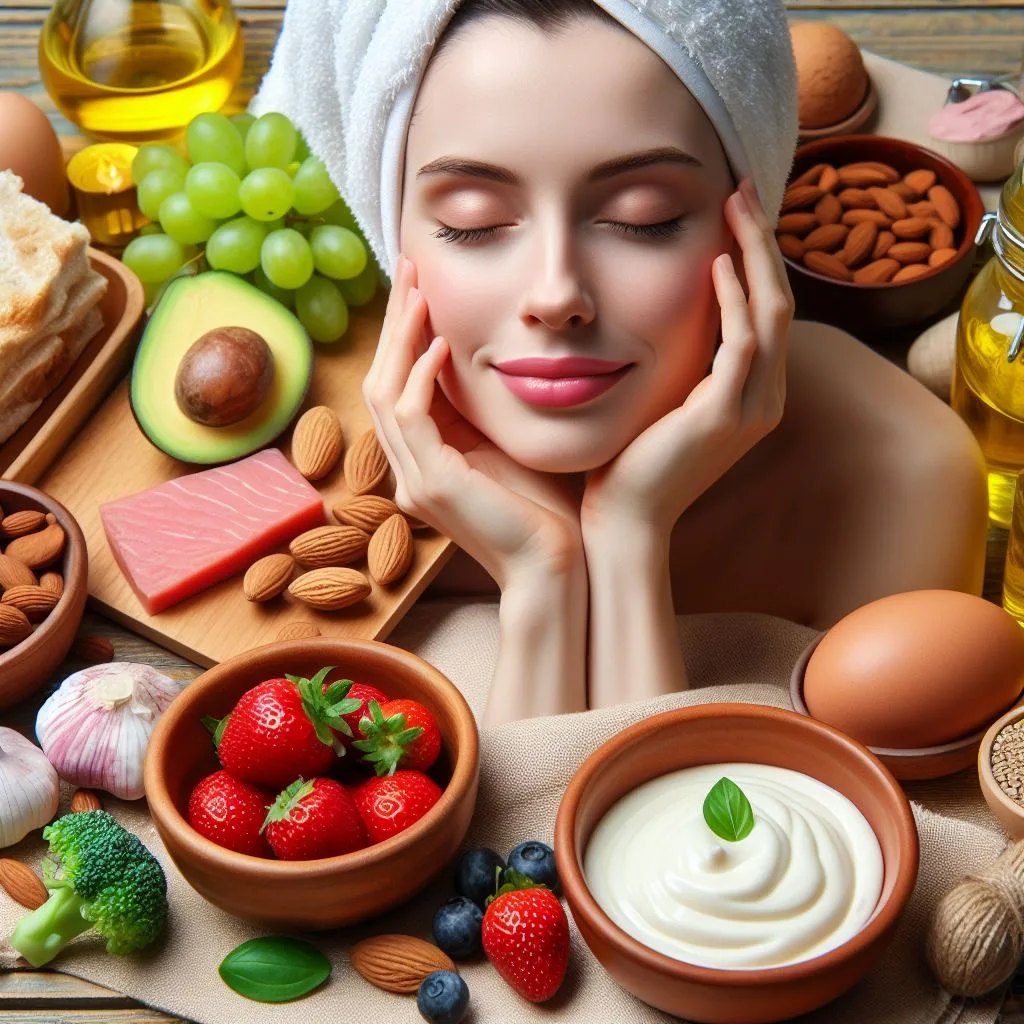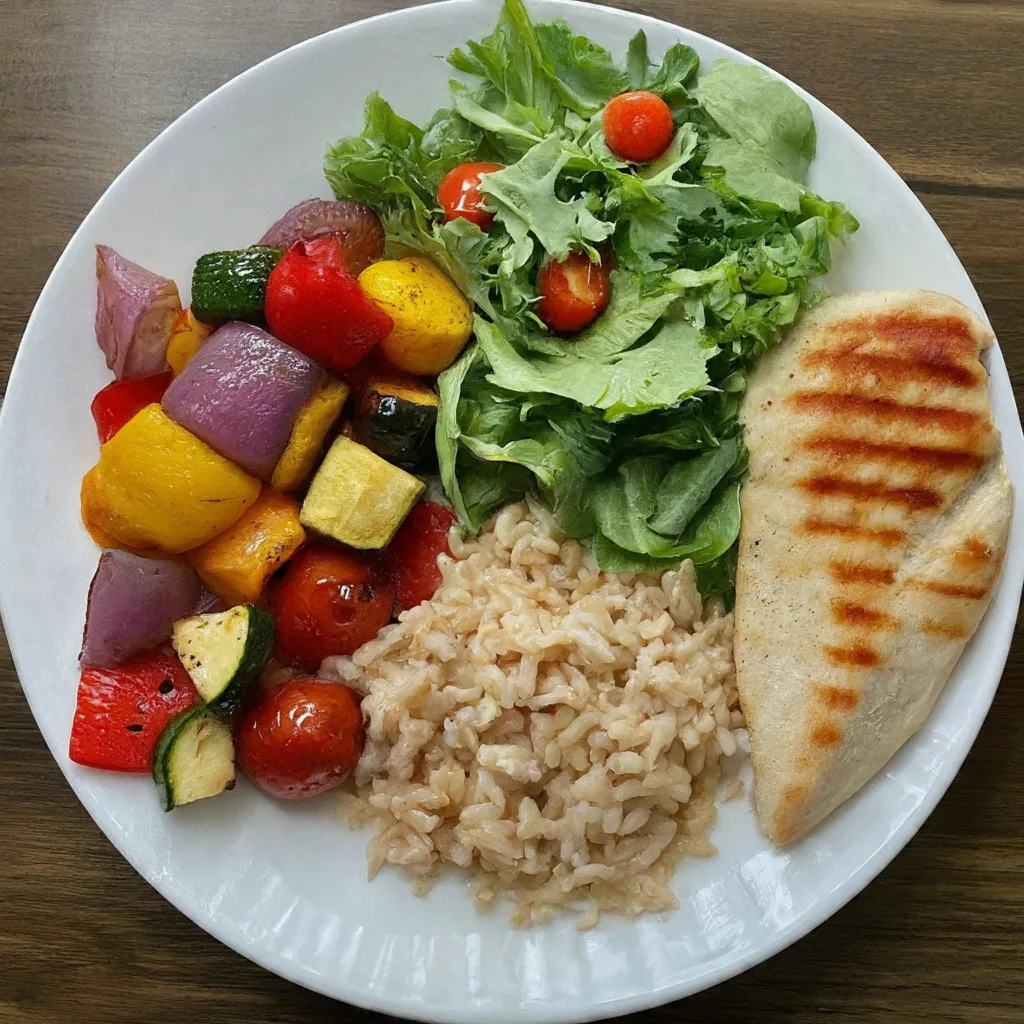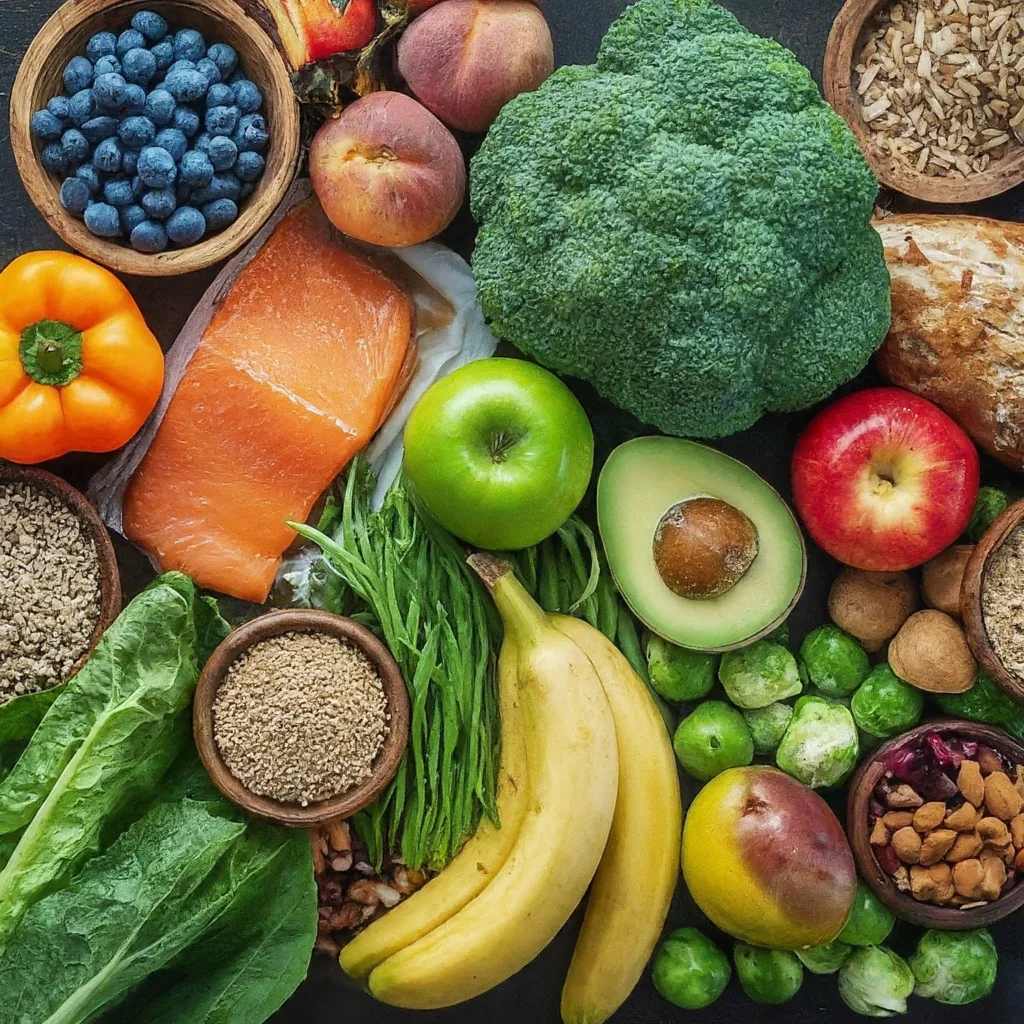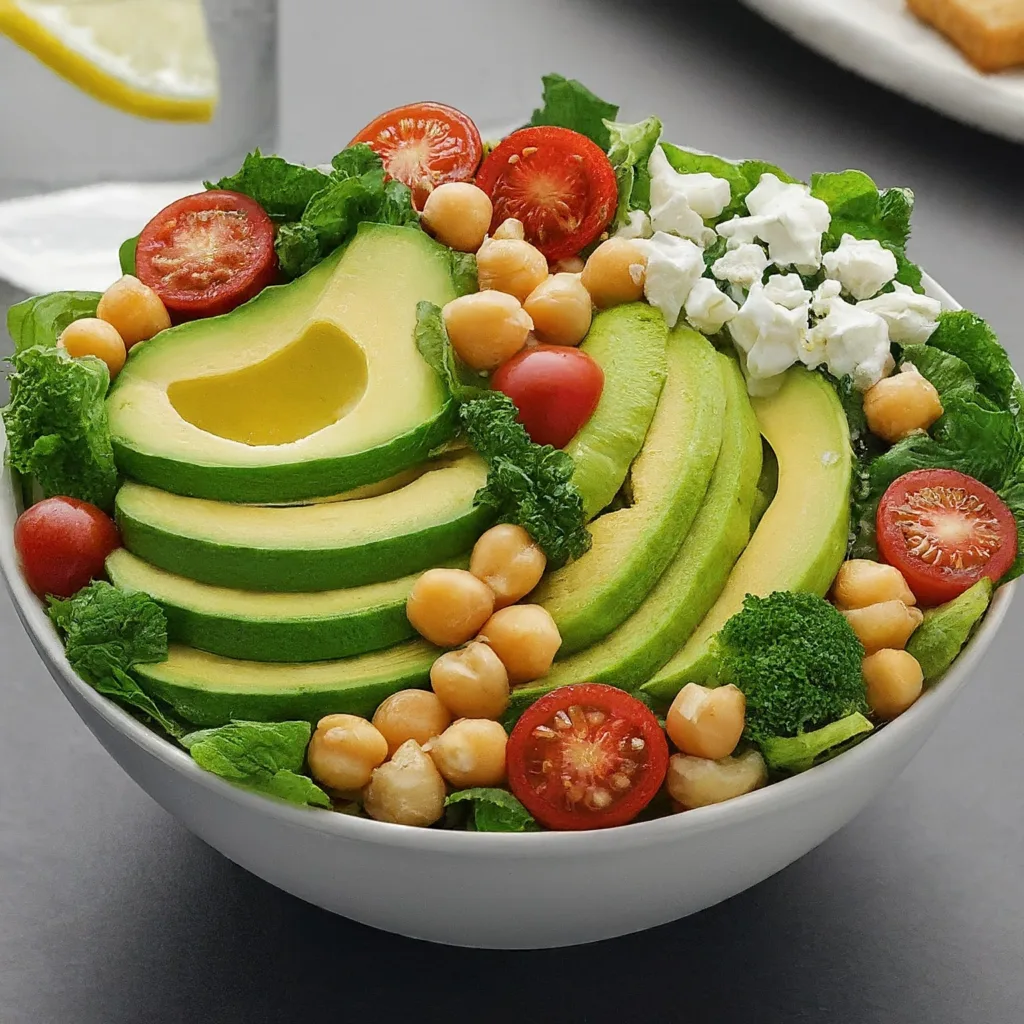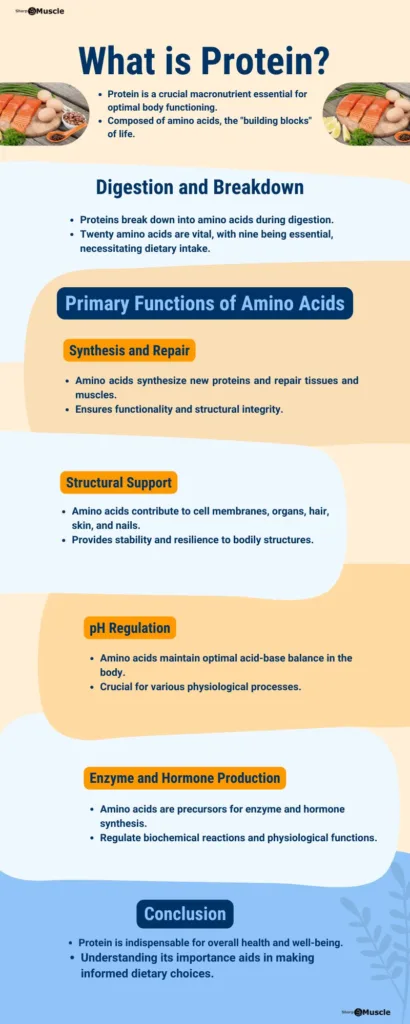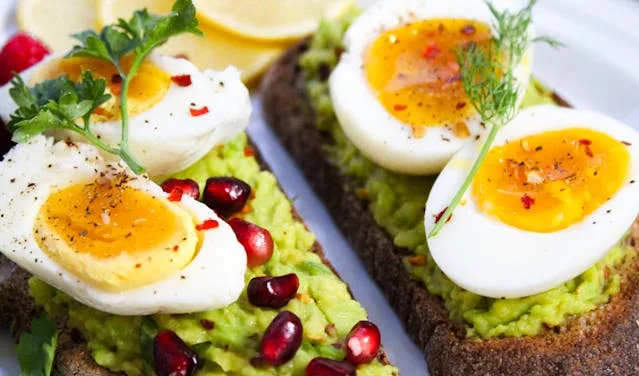Have you ever looked at pictures of yourself from years ago and marveled at how thick and lustrous your hair used to be? Hair loss, thinning, and dullness are common frustrations, and while numerous factors contribute to hair health, one often overlooked aspect is pH balance. Your scalp and hair have a naturally acidic pH level, and maintaining that balance is crucial for vibrant hair growth and overall scalp health. This is where alkaline foods come into play.
In This “Alkaline Foods for Hair Growth”
Understanding pH balance and its crucial role
pH levels play a crucial role in maintaining the health and vitality of our scalp and hair.
The pH scale measures acidity and alkalinity, ranging from 0 to 14, with 7 being neutral. Our scalp has a natural pH balance of around 5.5, which is slightly acidic. When this balance is disrupted, it can lead to various hair issues. 1
The Alkaline foods, play a crucial role in maintaining optimal pH levels, can help restore and maintain the pH balance of our scalp and hair. 2 By incorporating these foods into our diet, we can promote hair growth, strengthen hair strands, and improve overall scalp health.
Why pH Balance Matters
The pH scale ranges from acidic to alkaline. Acidic substances have a pH below 7, while alkaline substances have a pH above 7. Our scalp’s natural pH balance is slightly acidic, which helps to keep the cuticle layer of the hair smooth and protect against damage. 3
Warning Signs of Imbalance: What your hair reveals about its pH levels
When your scalp’s pH balance is disrupted, it can throw off this delicate ecosystem and lead to a host of issues, such as:
- Dry, itchy scalp
- Dandruff
- Hair breakage
- Excessive hair fall
- Dull, lifeless hair
An overly acidic or alkaline environment can cause the hair cuticle to swell or contract, making the hair more prone to damage and breakage.
Alkaline Foods for Hair Growth: Fueling Your Hair with the Best
An alkaline diet emphasizes consuming foods that have a pH value above 7. 4 5 But how can this support healthy hair? Here’s how:
- Reduces Inflammation: Chronic inflammation is linked to hair loss. Alkaline foods are known for their anti-inflammatory properties 2 6.
- Provides Essential Nutrients: Alkaline foods are packed with vitamins, minerals, and antioxidants vital for follicle health 7 8.
- Balances Overall pH: While they don’t directly change scalp pH, they can help offset the acidity created by processed foods, sugary drinks, and other items in the typical diet.
Let’s explore some of the top alkaline heroes for your hair:
1. Leafy Greens: Nature’s pH Balancers
Leafy greens like spinach, kale, arugula, and Swiss chard deserve a round of applause for their hair-boosting abilities. They’re teeming with essential nutrients like:
- Vitamin A: Promotes healthy sebum production, a natural scalp moisturizer 9
- Vitamin C: A powerful antioxidant that fights free radical damage and supports collagen production (vital for hair structure) 10 11
- Iron: Crucial for oxygen transport to hair follicles 12
2. Citrus Fruits: Vitamin C Boosters for Hair Growth
Citrus fruits like oranges, lemons, grapefruits, and limes are your scalp’s vitamin C powerhouses. Vitamin C plays a few key roles in hair health:
- Collagen Synthesis: Builds healthy hair structure
- Iron Absorption: Helps your body utilize this hair-essential mineral
- Free Radical Fighter: Protects against environmental damage to scalp and follicles
3. Nuts and Seeds: Essential Fatty Acids for Scalp Nourishment
Nuts like almonds, walnuts, and Brazil nuts are nutritional gems for your hair. They provide:
- Healthy Fats: Nourish the scalp and promote hair shine
- Zinc: Necessary for hair growth and repair 13
- Selenium: A potent antioxidant protecting scalp health 14 15
4. Root Vegetables: Nutrient-Rich Choices for Healthy Hair
Don’t underestimate the power of root vegetables like carrots, beets, and sweet potatoes. They offer a bounty of:
- Beta-carotene: Converts to vitamin A in the body
- Antioxidants: Combat oxidative stress linked to hair aging
- Vitamin B: Supports healthy cell growth and function (including hair follicles)
5. Plant-Based Proteins: Building Blocks for Stronger Hair Strands
Your hair is primarily made of protein (keratin). 16
Plant-based proteins found in foods like beans, lentils, tofu, and quinoa provide the amino acids necessary for building strong and healthy hair strands. They also contribute to pH balance and overall hair health.
Alkaline Eating for Hair Health
Don’t worry, an alkaline-focused diet doesn’t mean endless salads! Here are ways to sneak those hair-loving nutrients into every meal:
Breakfast:
- Power-up your oatmeal: Top with berries, nuts, and seeds.
- Smoothie boost: Blend leafy greens, a squeeze of citrus, and plant-based protein for a hair-healthy drink.
- Egg scramble surprise: Toss in chopped spinach or other veggies.
Lunch:
- Supercharged sandwiches: Swap white bread for whole grain and add avocado and sprouts.
- Lentil love: Enjoy vibrant lentil soups packed with veggies and protein.
- Rethink wraps: Use lettuce leaves as a base for chicken or veggie fillings.
Dinner:
- Veggie-packed stir-fries: Choose colorful vegetables over a base of brown rice or quinoa.
- Root vegetable medley: Roast a mix of carrots, beets, and sweet potatoes for a vibrant side dish.
- Fish feast: Grilled salmon with a side of steamed broccoli for a nutrient-rich meal.
Snacks:
- Fruit salad with a twist: Combine citrus fruits, berries, and a sprinkle of nuts.
- Hummus and veggie sticks: A satisfying and alkaline-friendly treat.
- Handful of almonds: Portable snack for healthy fats and a touch of protein.
Sample Meal Plans Incorporating Alkaline Foods for Hair Growth
Breakfast: Alkaline Green Smoothie
Ingredients:
- Handful of spinach
- 1/2 cucumber
- 1/2 avocado
- 1 banana
- 1 cup almond milk
- 1 tablespoon chia seeds
Instructions:
- Blend all ingredients until smooth.
- Pour into a glass and enjoy your nutrient-packed, alkaline breakfast smoothie.
Lunch: Quinoa Salad with Citrus Vinaigrette
Ingredients:
- 1 cup cooked quinoa
- Mixed greens (such as spinach, kale, and arugula)
- 1 orange, segmented
- 1/4 cup sliced almonds
- 1/4 cup diced red onion
- Dressing: 2 tablespoons olive oil, 1 tablespoon fresh lemon juice, 1 teaspoon honey, salt and pepper to taste
Instructions:
- In a large bowl, combine cooked quinoa, mixed greens, orange segments, sliced almonds, and diced red onion.
- In a small bowl, whisk together olive oil, lemon juice, honey, salt, and pepper to make the dressing.
- Drizzle the dressing over the salad and toss to coat. Serve and enjoy your refreshing and alkaline-rich lunch.
Dinner: Baked Salmon with Roasted Vegetables
Ingredients:
- 2 salmon fillets
- Assorted root vegetables (such as carrots, sweet potatoes, and beets), diced
- 1 tablespoon olive oil
- Fresh herbs (such as rosemary or thyme), chopped
- Salt and pepper to taste
Instructions:
- Preheat oven to 375°F (190°C).
- Place salmon fillets on a baking sheet lined with parchment paper.
- In a separate bowl, toss diced root vegetables with olive oil, chopped herbs, salt, and pepper.
- Spread the seasoned vegetables around the salmon fillets on the baking sheet.
- Bake in the preheated oven for 15-20 minutes, or until the salmon is cooked through and the vegetables are tender.
- Serve the baked salmon with roasted vegetables for a delicious and alkaline-packed dinner.
Snacks: Alkaline Trail Mix
Ingredients:
- Almonds
- Walnuts
- Pumpkin seeds
- Dried cranberries (unsweetened)
- Goji berries
Instructions:
- Mix together equal parts of almonds, walnuts, pumpkin seeds, dried cranberries, and goji berries in a bowl.
- Portion out the trail mix into small snack bags for convenient on-the-go snacking.
- Enjoy your nutrient-dense and alkaline-friendly snack whenever hunger strikes.
Beyond Your Plate: Holistic Hair Health
While an alkaline-rich diet plays a significant role in hair health, it’s just one piece of the puzzle. Here are other impactful factors:
1. Hydration
Dehydration throws off your entire body’s balance, including your scalp. Staying hydrated is essential for maintaining pH balance in the body.
Drink plenty of water throughout the day to help flush out acidic toxins and keep your scalp and hair hydrated. Aim for at least 8 glasses of water daily. Not a fan of plain water? Add slices of citrus or cucumber for a flavor boost.
2. Stress Management Techniques
Chronic stress disrupts pH balance in the body and lead to various health issues including hair loss and scalp problems 17 18. Here are a few stress-busting techniques:
- Mindfulness and Meditation: Even 5-10 minutes daily can make a difference.
- Yoga or Gentle Exercise: Releases tension and boosts circulation.
- Deep Breathing Exercises: Calms the nervous system in minutes.
3. Exercise supports
Regular exercise improves blood flow, carrying vital nutrients to your hair follicles while also aiding in stress reduction.
Even brisk walks can make a positive impact. Aim for at least 30 minutes of moderate exercise most days of the week to support pH balance and overall hair health.
Additional Strategies for pH Balance and Hair Care
1. Apple Cider Vinegar Rinse: A Natural pH Restorer for Hair
A diluted apple cider vinegar (ACV) rinse can temporarily balance scalp pH and remove product buildup.
How to: Safe ACV rinse dilution
Ingredients:
- Apple cider vinegar (preferably organic, raw, and unfiltered)
- Filtered water
Instructions for Diluted ACV Rinse:
- Start by mixing 1 part apple cider vinegar with 3 parts filtered water in a clean container. For example, if you’re using 1/4 cup of apple cider vinegar, mix it with 3/4 cup of water.
- Stir the mixture well to ensure the vinegar is evenly distributed in the water.
- After shampooing and rinsing your hair thoroughly, tilt your head back and slowly pour the diluted ACV mixture over your scalp. Be careful to avoid getting it into your eyes.
- Gently massage the mixture into your scalp for 1-2 minutes to ensure even distribution and absorption.
- Let the ACV rinse sit on your scalp for a few minutes to allow it to work its magic.
- Rinse your hair thoroughly with lukewarm water to remove the ACV mixture. Ensure that no vinegar residue remains on your scalp or hair.
- Follow up with your usual conditioner if desired, although the ACV rinse can also act as a natural conditioner and detangler.
- Pat your hair dry with a soft towel and style as usual.
Tips:
- It’s crucial to dilute the apple cider vinegar with water to avoid potential irritation or damage to your scalp and hair. Undiluted ACV is highly acidic and can be too harsh when applied directly to the scalp.
- Use filtered water to ensure that no impurities or chemicals are present in your ACV rinse mixture.
- Perform an ACV rinse no more than once or twice a week to prevent over-drying or stripping the scalp of its natural oils.
- If you have sensitive skin or scalp conditions such as eczema or psoriasis, it’s best to consult with a dermatologist before using an ACV rinse to ensure it’s safe for your specific needs.
- If you experience any discomfort, irritation, or allergic reactions after using an ACV rinse, discontinue use immediately and consult with a healthcare professional.
2. pH-Balanced Hair Products: Choosing the Right Shampoos and Conditioners
Harsh shampoos can strip your scalp’s natural oils, leading to pH disruption.
Look for hair care products that are “pH-balanced” and free of harsh chemicals that can disrupt the scalp’s natural pH balance. Opt for gentle, sulfate-free shampoos and conditioners that nourish the hair without stripping away its natural oils.
3. Herbal Remedies: Plant-Based Solutions for pH Imbalance and Hair Problems
Many herbs boast properties that soothe the scalp and promote hair growth. Research options like rosemary, nettle, and aloe vera, and lavender have pH-balancing properties that can help soothe the scalp and promote hair growth.
Incorporate these herbs into your hair care routine through DIY masks, oils, or herbal rinses.
Tracking Your Hair’s Transformation
Change doesn’t happen overnight, but as you incorporate alkaline foods and address other holistic factors, you’ll start noticing positive shifts.
Look for:
- Reduced Scalp Itchiness and Dryness: A balanced scalp is a happy scalp.
- Less Breakage: Stronger hair due to better nourishment.
- New Hair Growth: Alkaline foods and healthier habits might stimulate dormant follicles.
- Improved Shine and Texture: Nourished hair naturally looks more vibrant.
A journal is a powerful tool:
- Track Dietary Changes: Note what you eat to identify patterns.
- Lifestyle Habits: Monitor your sleep, stress levels, and exercise routines.
- Product Notes: Observe how your hair reacts to different shampoos or styling aids.
- Progress Photos: Take regular pictures under similar lighting for visual comparison.
This journey is uniquely yours! Pay attention to your body’s signals. If certain foods cause digestive upset, explore other alkaline options. If a stress management technique doesn’t resonate, experiment with different methods. Your hair and pH journal is a powerful guide – analyze it regularly to make informed adjustments along the way.
Let the positive changes motivate you! If you notice healthier hair after incorporating alkaline foods or reducing stress, celebrate those wins and keep those habits going strong for long-term hair wellness.
Conclusion
A diet rich in alkaline foods lays a strong foundation for healthy hair by supplying vital nutrients and potentially counteracting the effects of acidity. It’s a simple yet powerful change with far-reaching benefits.
Remember, beautiful hair reflects overall well-being. Combining an alkaline approach with good hydration, stress management, and conscious hair care choices creates a recipe for success.
Important Disclaimer: While an alkaline-focused diet can offer numerous health benefits, it’s important to consult with your doctor before making significant dietary changes, especially if you have underlying health conditions. For severe scalp issues or hair loss, it’s essential to seek the advice of a dermatologist to determine the root cause and appropriate treatment plan.
FAQs
What is considered an alkaline food?
Alkaline foods generally have a pH above 7. They primarily include:
- Fruits (especially citrus, berries, melons)
- Vegetables (especially leafy greens, root vegetables, cruciferous vegetables)
- Nuts and seeds
- Legumes (lentils, beans, etc.)
- Some herbs and spices
- Naturally alkaline water
How does an alkaline diet help with hair growth?
An alkaline diet doesn’t directly change your scalp’s pH, but it offers several benefits for hair health:
- Reduces Inflammation: Chronic inflammation can contribute to hair loss. Alkaline foods contain anti-inflammatory compounds.
- Delivers Vital Nutrients: These foods are packed with vitamins, minerals, and antioxidants essential for hair follicle health.
- Balances Overall pH: An alkaline-focused diet can help offset the acidity of processed foods and sugary drinks, promoting a healthier internal environment.
Can pH imbalance cause hair loss?
Yes, an imbalance in your scalp’s pH can contribute to hair loss. A too-alkaline scalp can lead to dryness and breakage, while a too-acidic environment creates conditions where bacteria and fungi can thrive, potentially leading to inflammation and hair follicle damage.
What are the signs of a scalp pH imbalance?
Signs of a scalp pH imbalance may include:
- Dry, itchy scalp
- Dandruff or flakiness
- Excessive oiliness
- Hair breakage or thinning
- Unexplained hair loss
What are the best alkaline foods for hair health?
Focus on these alkaline powerhouses:
- Leafy greens (spinach, kale, etc.)
- Citrus fruits (lemons, oranges, etc.)
- Root vegetables (beets, carrots, etc.)
- Nuts and seeds
- Legumes (lentils, beans, etc.)
How can I incorporate more alkaline foods into my diet?
Here are easy tips:
- Start your day with a green smoothie.
- Choose salads or veggie-packed meals for lunch.
- Swap sugary snacks for fruits and nuts.
- Include alkaline-rich side dishes with dinner.
Are there any natural hair care products that help with pH balance?
Yes! Look for:
- Gentle, pH-balanced shampoos and conditioners.
- Apple cider vinegar (diluted) as a scalp rinse.
- Herbal hair masks containing ingredients like aloe vera or nettle.
How long does it take to see results from focusing on alkaline foods for hair?
Everyone is different. You might notice some improvements within a few weeks, like less scalp itchiness or improved shine. More significant changes like new hair growth can take several months of consistent healthy habits.
Does an alkaline diet mean I can never eat acidic foods again?
No, an alkaline diet does not mean you can never eat acidic foods again. The key is to focus on balance and moderation in your diet. While it’s beneficial to include alkaline foods for overall health, it’s also important to enjoy a variety of foods in moderation, including acidic foods, to ensure you’re getting a balanced intake of nutrients.
Is an alkaline diet the only thing that matters for healthy hair?
No. An alkaline diet is a fantastic foundation, but holistic hair care is key. This includes adequate hydration, stress management, gentle hair products, and addressing any underlying medical conditions.
- pH Scale | U.S. Geological Survey. (2019, June 19). https://www.usgs.gov/media/images/ph-scale-0.[↩]
- Schwalfenberg GK. “The alkaline diet: is there evidence that an alkaline pH diet benefits health?” J Environ Public Health. 2012;2012:727630. doi: 10.1155/2012/727630. Epub 2011 Oct 12. PMID: 22013455; PMCID: PMC3195546.[↩][↩]
- What is pH? | US EPA. (2023, November 6). US EPA. https://www.epa.gov/goldkingmine/what-ph.[↩]
- Alkaline diet. (2023, December 1). Wikipedia. https://en.wikipedia.org/wiki/Alkaline_diet.[↩]
- Schwalfenberg GK. “The alkaline diet: is there evidence that an alkaline pH diet benefits health?” J Environ Public Health. 2012;2012:727630. doi: 10.1155/2012/727630. Epub 2011 Oct 12. PMID: 22013455; PMCID: PMC3195546.[↩]
- Amjadi A, Pasdar Y, Rezaeian S, Nachvak M, Ghavamzadeh S, Alizadeh M, Abdollahzad H, Navabi J. “The Association Between Dietary Acidity and Clinical Symptoms in Patients With Rheumatoid Arthritis.” Clin Nutr Res. 2022 Oct 28;11(4):277-288. doi: 10.7762/cnr.2022.11.4.277. PMID: 36381476; PMCID: PMC9633968.[↩]
- Almohanna HM, Ahmed AA, Tsatalis JP, Tosti A. “The Role of Vitamins and Minerals in Hair Loss: A Review.” Dermatol Ther (Heidelb). 2019 Mar;9(1):51-70. doi: 10.1007/s13555-018-0278-6. Epub 2018 Dec 13. PMID: 30547302; PMCID: PMC6380979.[↩]
- Bassino E, Gasparri F, Munaron L. “Protective Role of Nutritional Plants Containing Flavonoids in Hair Follicle Disruption: A Review.” Int J Mol Sci. 2020 Jan 14;21(2):523. doi: 10.3390/ijms21020523. PMID: 31947635; PMCID: PMC7013965.[↩]
- VanBuren CA, Everts HB. “Vitamin A in Skin and Hair: An Update.” Nutrients. 2022 Jul 19;14(14):2952. doi: 10.3390/nu14142952. PMID: 35889909; PMCID: PMC9324272.[↩]
- Pullar JM, Carr AC, Vissers MCM. “The Roles of Vitamin C in Skin Health.” Nutrients. 2017 Aug 12;9(8):866. doi: 10.3390/nu9080866. PMID: 28805671; PMCID: PMC5579659.[↩]
- Telang PS. “Vitamin C in dermatology.” Indian Dermatol Online J. 2013 Apr;4(2):143-6. doi: 10.4103/2229-5178.110593. PMID: 23741676; PMCID: PMC3673383.[↩]
- Park SY, Na SY, Kim JH, Cho S, Lee JH. “Iron plays a certain role in patterned hair loss.” J Korean Med Sci. 2013 Jun;28(6):934-8. doi: 10.3346/jkms.2013.28.6.934. Epub 2013 Jun 3. PMID: 23772161; PMCID: PMC3678013.[↩]
- Park H, Kim CW, Kim SS, Park CW. “The therapeutic effect and the changed serum zinc level after zinc supplementation in alopecia areata patients who had a low serum zinc level.” Ann Dermatol. 2009 May;21(2):142-6. doi: 10.5021/ad.2009.21.2.142. Epub 2009 May 31. PMID: 20523772; PMCID: PMC2861201.[↩]
- Nessel TA, Gupta V. “Selenium.” [Updated 2023 Apr 3]. In: StatPearls [Internet]. Treasure Island (FL): StatPearls Publishing; 2024 Jan-. Available from: https://www.ncbi.nlm.nih.gov/books/NBK557551/.[↩]
- Pincemail J, Meziane S. “On the Potential Role of the Antioxidant Couple Vitamin E/Selenium Taken by the Oral Route in Skin and Hair Health.” Antioxidants (Basel). 2022 Nov 17;11(11):2270. doi: 10.3390/antiox11112270. PMID: 36421456; PMCID: PMC9686906.[↩]
- Yang FC, Zhang Y, Rheinstädter MC. “The structure of people’s hair.” PeerJ. 2014 Oct 14;2:e619. doi: 10.7717/peerj.619. PMID: 25332846; PMCID: PMC4201279.[↩]
- How stress causes hair loss. (2021, April 20). National Institutes of Health (NIH). https://www.nih.gov/news-events/nih-research-matters/how-stress-causes-hair-loss.[↩]
- Chen Y, Lyga J. “Brain-skin connection: stress, inflammation and skin aging.” Inflamm Allergy Drug Targets. 2014;13(3):177-90. doi: 10.2174/1871528113666140522104422. PMID: 24853682; PMCID: PMC4082169.[↩]


